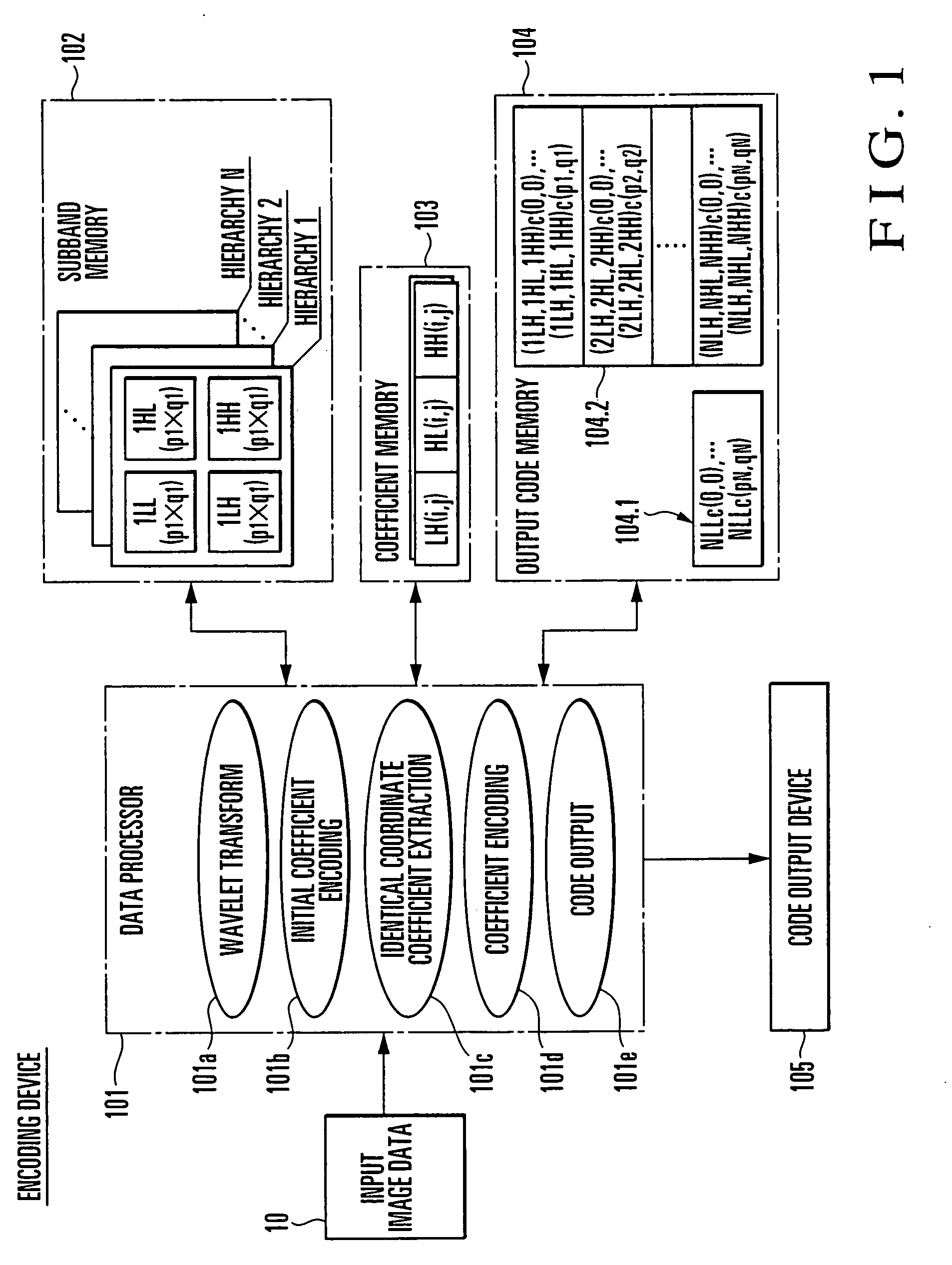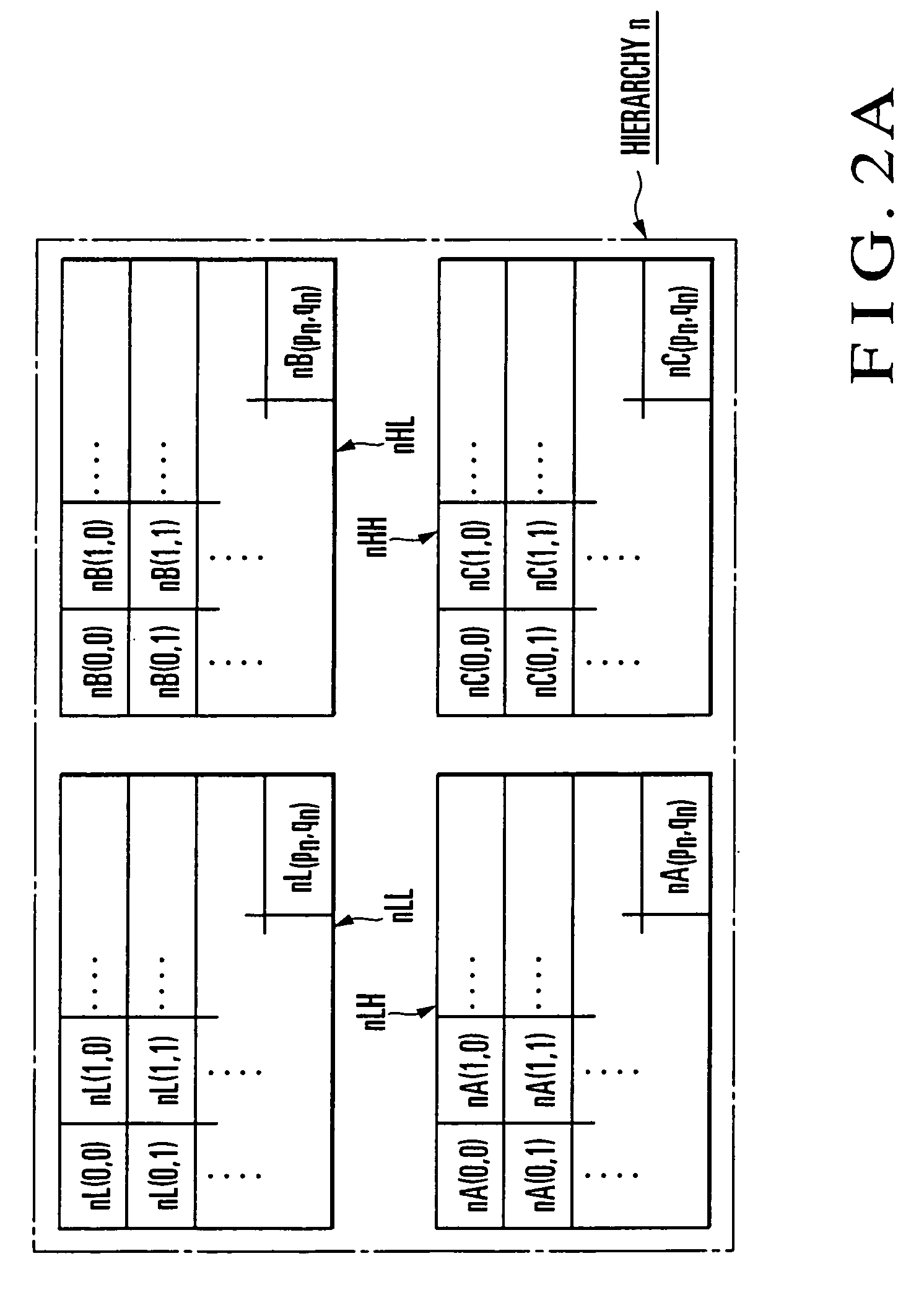2-Dimensional signal encoding/decoding method and device
a signal and signal technology, applied in the field of two-dimensional signal compression/decompression methods, can solve the problems of block noise in the tile boundary, discontinuous distortion, etc., and achieve the effect of reducing the number of times of store/load increasing the encoding speed, and reducing the number of times of access to a real memory
- Summary
- Abstract
- Description
- Claims
- Application Information
AI Technical Summary
Benefits of technology
Problems solved by technology
Method used
Image
Examples
first embodiment
1. First Embodiment
1.1) Encoding Device
[0048]FIG. 1 is a block diagram showing an outline of the arrangement of an encoding device according to the first embodiment of the present invention. This encoding device receives image data 10 from an image input device (not shown), and outputs a code sequence by wavelet encoding (to be described later). The encoding device mainly comprises a data processor 101, subband memory 102, coefficient memory 103, and output code memory 104, and outputs the generated code sequence to a code output device 105.
[0049] The data processor 101 is a program control processor such as a general CPU (Central Processing Unit), and can generate a wavelet transform (in this embodiment, two-dimensional Haar wavelet transform) process (wavelet transforming means 101a), an initial coefficient encoding process (initial coefficient encoding means 101b), an identical coordinate coefficient extraction process (identical coordinate coefficient extracting means 101c), ...
second embodiment
2. Second Embodiment
2.1) Encoding Device
[0102]FIG. 6 is a block diagram showing an outline of the arrangement of an encoding device according to the second embodiment of the present invention. This encoding device receives image data 10 as a representative example of a two-dimensional signal from an image input device (not shown), and outputs a code sequence by wavelet encoding (to be described later). The encoding device mainly comprises a data processor 301, LL subband memory 302, coefficient memory 303, and output code memory 304, and outputs the generated code sequence to a code output device 305.
[0103] The data processor 301 is a program control processor such as a general CPU, and can generate a pixel extraction process (pixel extracting (element extracting) means 301a), a wavelet transform (in this embodiment, two-dimensional Haar wavelet transform) process (wavelet transforming means 301b), a coefficient encoding process (coefficient encoding means 301c), an initial coeff...
third embodiment
3. Third Embodiment
3.1) Encoding Device
[0145]FIG. 9 is a block diagram showing an outline of the arrangement of an encoding device according to the third embodiment of the present invention. This encoding device receives image data 10 as a representative example of two-dimensional signals from an image input device (not shown), and outputs a code sequence by wavelet encoding (to be described later). The encoding device mainly comprises a data processor 401, LL subband memory 402, coefficient memory 403, output code memory 404, and pixel thinning map memory 405, and outputs the generated code sequence to a code output device 406.
[0146] The data processor 401 is a program control processor such as a general CPU, and can generate a pixel thinning map generation process (pixel thinning map generating means 401a), a pixel thinning extraction process (pixel thinning extracting means 401b), a wavelet transform (in this embodiment, two-dimensional Haar wavelet transform) process (wavelet...
PUM
 Login to View More
Login to View More Abstract
Description
Claims
Application Information
 Login to View More
Login to View More - R&D
- Intellectual Property
- Life Sciences
- Materials
- Tech Scout
- Unparalleled Data Quality
- Higher Quality Content
- 60% Fewer Hallucinations
Browse by: Latest US Patents, China's latest patents, Technical Efficacy Thesaurus, Application Domain, Technology Topic, Popular Technical Reports.
© 2025 PatSnap. All rights reserved.Legal|Privacy policy|Modern Slavery Act Transparency Statement|Sitemap|About US| Contact US: help@patsnap.com



